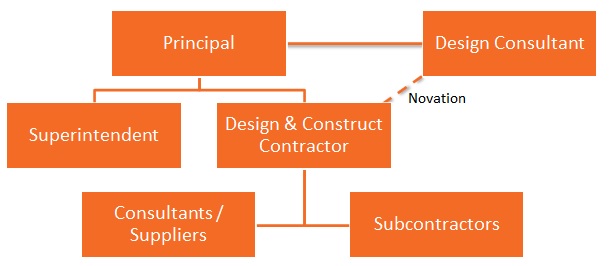If you work in the building and construction industry, you have likely heard the phrase 'design and construct'. Design and construct is a familiar project delivery method and form of contract, largely used for medium to large construction projects. The common alternative to a design and construct delivery method is a 'construct only' project delivery method. This article explores the advantages and disadvantages of a design and construct contract to help you decide whether to use this method in the delivery of your construction projects.
What is a Design and Construct Contract?
Suppose you are a contractor engaged by a principal to perform works under a design and construct contract. In that case, you will be responsible for both developing the project design and carrying out the physical build. The principal usually engages design consultants to prepare a concept or preliminary design to help clarify the project requirements. If you are the contractor, you will then use these preliminary designs as a base to develop and complete the design. You will progress the preliminary design to final 'for construction' design documentation. You must then carry out the work in accordance with the final design documentation. Accordingly, you take on both the construction and design risk.
Under this delivery process, the design consultants engaged in preparing the preliminary design are usually novated from the principal to you.

A slightly alternative arrangement is where you are engaged to also prepare the preliminary design. Therefore, you take responsibility for the entire design development process. However, the model illustrated in the graphic above is more common.
Advantages of the 'Design and Construct' Model
The design and construct model is best suited to projects with a complex design. Additionally, it is suitable where the final design documentation cannot be completed prior to commencing construction.
Depending on whether you are the principal or the contractor, the advantages of the design and construct delivery method may vary.
For Principals
The benefits of a design and construct for principles include that:
- the contractor assumes all risks in the design, including design defects, delays, buildability, regulatory compliance, and issues concerning the interface of design with construction. The contractor is the single point of responsibility in the event of defects;
- contractors may warrant that the design, including ensuring the design is 'fit for purpose';
- the builder can identify site-related challenges early and factor this into the design improving efficiency and reducing costs;
- the contractor has the opportunity to contribute their construction experience to the design, resulting in building innovation, cost and time efficiencies, and a more flexible design; and
- the designer and builder can work collaboratively during the design process to identify cost efficiencies and consider the overall project cost from the outset thereby allowing the project to fall under budget.
For Contractors
The benefits for a contractor include that:
- you can address and handle structural issues, including engineering and building compliance, during the design process;
- you can 'fast track' construction ahead of full design documentation and start receiving progress payments earlier, provided there is adequate control over design quality; and
- you can usually charge a premium for taking on the design risk, though you should ensure you have professional indemnity insurance coverage.
Disadvantages of the 'Design and Construct' Model?
Design and construct contracts are helpful because they can offer a streamlined approach to project delivery. However, there are disadvantages to this model, some examples of which are set out below.
For Principals
Principals are less involved in the entire project process. You relinquish significant control over the management of design consultants. A principal is limited in their ability to input into the design following the design brief's development (typically pre-tender) unless it seeks a post-contract variation. As a result, you must clarify the design criteria and performance standards in the project brief (or the 'Principal's Requirements') at the time of tender and incorporate these criteria or performance standards into the final design and construct contract. Not incorporating these items into the contract may lead to a dispute.
Furthermore, you often pay a premium to transfer design risks to the contractor. Additionally, you may not have the opportunity to choose the 'best' designer.
For Contractors
- You must have in-house design expertise or subcontract a designer;
- You take on a greater risk due to being responsible for the design, the design of 'for construction' documentation, and the construction of the project. Oftentimes you take on these responsibilities for a price determined and agreed prior to the final designs being produced.
- Design and construct contracts often include an implied (or express) warranty that, because you are managing the design, the project will be ' fit for purpose'.
Key Takeaways
Knowing whether to sign up for a design and construct contract can be daunting. Design and construct contracts differ from the traditional principal lead design and construction-only contract approach. There are various benefits and disadvantages for each side of the argument. Thus, it is essential to understand how these factors affect your project.
